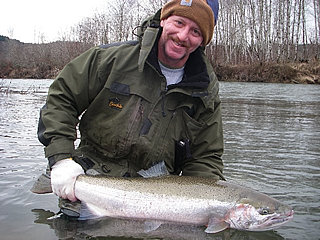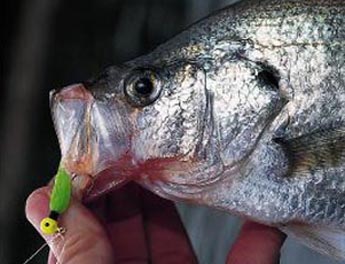There are some days when the only smart thing to do with a boat is to leave it in the garage. But all of us like to push the envelope at times, especially if the walleyes or stripers are on a binge and, weather be damned, we’re going to get out there and take a few licks–in more ways than one.
Boating in rough water is rarely fun, but it need not be dangerous or painful. First, know your own limits, and those of your boat. A big, deep, V-hull boat with a tall transom and automatic bilge pumps can take on some pretty scary water and still bring you home. On the other hand, a low-freeboard, heavy-in-the-hams bass rig that’s a real bullet in a 1-foot chop may stuff its nose, do a somersault and sink in 4-foot waves. When in doubt, sit it out.
GET READY
Before you take on rough water, make sure your boat is ready. Check your bilge pumps, secure all hatches, drop the water level in your livewells and fasten down or stow all rods, tackle and anything else that might become an airborne missile as your boat rears up and down like a bucking bronco.
Make sure your trolling motors are secured, too. Put on foul-weather gear, because no matter how well your boat is designed, you’ll probably get a lot of water in the cockpit, and you’ll make better decisions if you stay warm and dry. Finally, buckle your life jacket on tight, and attach the emergency stop lanyard to it, just in case.
TRIM YOUR MOTOR
To soften the ride in rough water, bring the sharp forward sections of the bottom, the deepest part of the V in most fishing boats, into first contact with the waves. This splits them like a knife and softens the impact.
Trim your outboard in, dropping the bow, to bring this about. Just be sure not to overtrim to the point where you experience what’s known as “bow-steering,” with the bow acting as a pivot to force the boat off course.
Dropping the bow works up to a point, but when waves get really tall, you will have to come off plane to save your boat from a beating. In these conditions, you want the bow high instead of low, so trim the motor back out, forcing the stern down and the bow up.
In truly tall seas–long, rolling 6-footers or more–the best strategy is often to go with the waves. Get on the back of a big wave and ride there, throttling up and down to hold your position just behind the wave’s peak. This is a great trick for riding through a really rough inlet, as you might face where a river enters a big lake, because a big wave tends to flatten the smaller but steeper and more treacherous waves that are bouncing around.
On big lakes where sportfishing cruisers abound, get behind one of them and ride on the second swell to pass through a tough inlet; again, their passage flattens the other waves, leaving you in smoother water.
EASE THE PAIN
The Garelick 77000 shock-absorbing marine-seat mount fits between any standard bass or walleye boat seat with sliding tracks and provides a cushioning effect against real “butt buster” wave impacts. The $100 item is easy and quick to install, and is adjustable for the driver’s weight. (651-459-9795, www.garelick.com)
Quick Tip RUNNING SMART
In general, it’s best to run quartering into rough seas when you can. You might have to tack back and forth across a stretch of really rough water to avoid running “in the trough” or broadside to the waves, but that’s better than risking a rollover.



